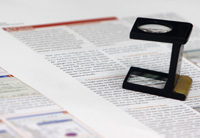It seems like most of us are in a constant rush: the perfect environment for email errors that seem so determined to happen. Errors that make meaning unclear, and – worst case – result in time-consuming additional explanation, and “fixing.”
What’s needed is a fast mental checklist of some of the unexpected, but potentially lethal things you can look for quickly before hitting the send button.
- Of course you will start with the built-in spell- and grammar- checkers, being aware of their shortcomings: words correctly spelled, but in the wrong place, e.g., “at” for “an,” “to, too, two” (which one do you need?); words that don’t mean what you think they mean; the “passive” incorrectly questioned, and so on. The old eyeball still needs to look the piece over.
- Then you will check for absolute word clarity. Did the word(s) you used say what you mean? Many words sound very similar, but have quite different meanings. Two prime examples: formally vs. formerly (which would you use if you meant “used to be”?); and expedient vs. expedite (which would you use to mean “to speed,” or “to hurry”?)
- Now look at comprehension. Is there a chance your information could be misunderstood? Are you saying what you mean? If you offer a “new member program” is the program new, or is the member new? A “new-member program” (with the hyphen) would clearly be for new members only. A “new members-only program” would make it clear that the new program is only for members, but the members could be either new or existing. The “new member program” could be interpreted either way, and could lead to some time-consuming emails and conversations to clarify what you meant.
- One final checkpoint that is too often overlooked: Take a hard look at words like he, she, it, they, we. Is it clear just who you mean by “he”? Or what is “it”? Arguably, this is right up near the top of the list of the most common sources of confusion, and can lead to rumors, office problems, and a lot of misunderstanding – all of which takes time to fix!
To receive your Business Writing Tip of the Week automatically every week, please subscribe to our newsletter. We appreciate your recommending a Gail Tycer business writing workshop for your workplace, or a shorter presentation for an upcoming professional meeting. Thank you.